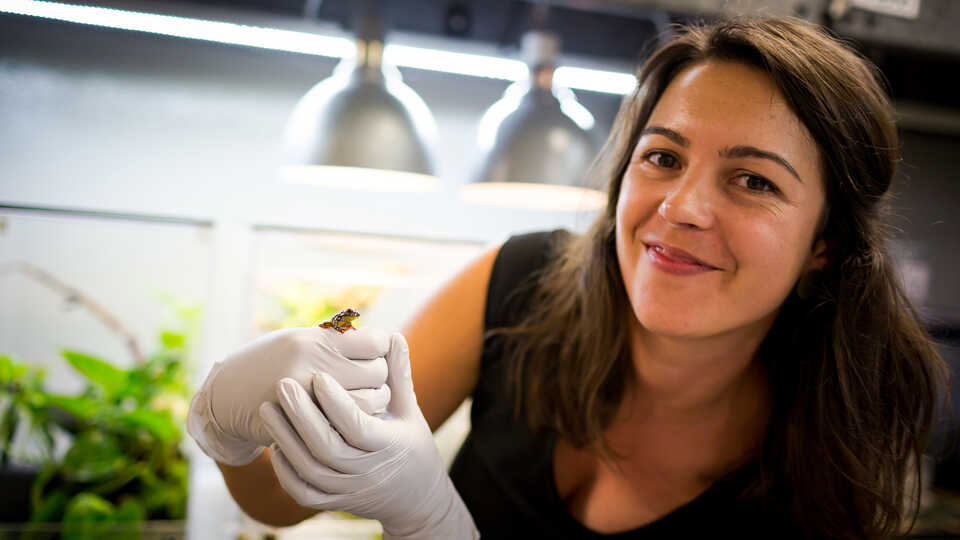“Most frog biologists do everything in the dark,” says Rayna Bell. This is more of a necessity than a preference, thanks to the nocturnal dispositions of the amphibians she studies. Whether she’s plunging into a rainforest in West-Central Africa guided by headlamp or examining frog retinas in the darkness of her lab, Bell is undeterred by lack of light—which can lead to some illuminating observations.
“It changes the way you look at things when you're walking through the dense rainforest and can only see a meter or two in front of you; you notice tiny creatures and cool-looking plants and fungi you might miss during the day,” Bell says. “I’ve seen bioluminescent fungi ‘by accident’ because I had to turn my light off and wait for a frog to start calling again—and in the darkness I saw the forest floor was glowing. It was pretty magical.”
Above: A Riggenbach's reed frog (Hyperolius riggenbachi)—see it on exhibit in Color of Life.











